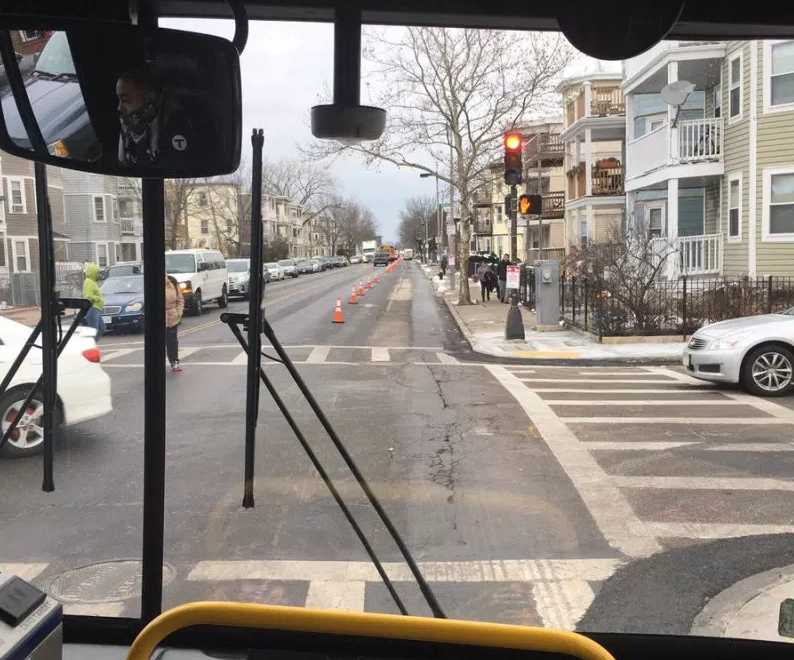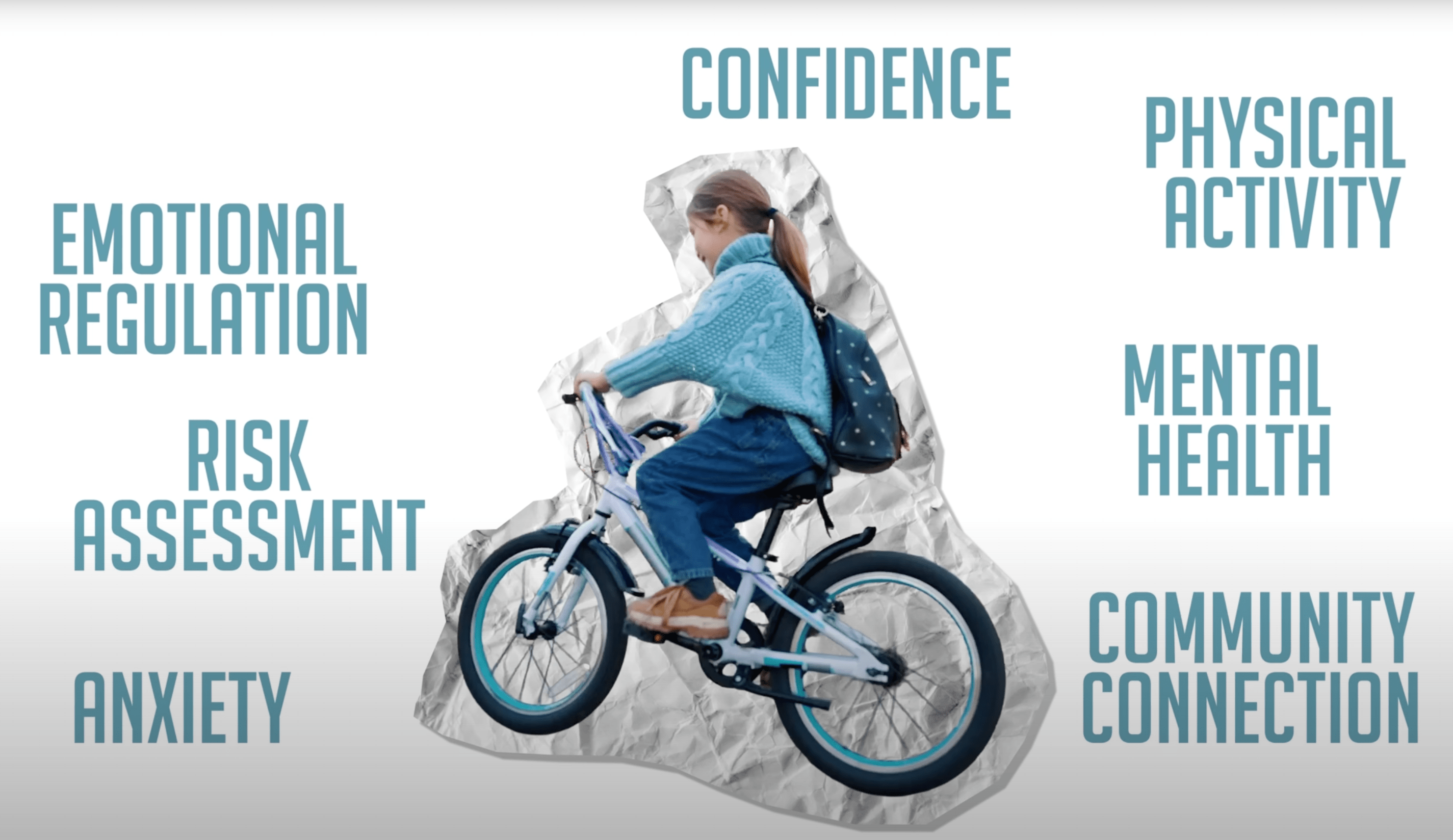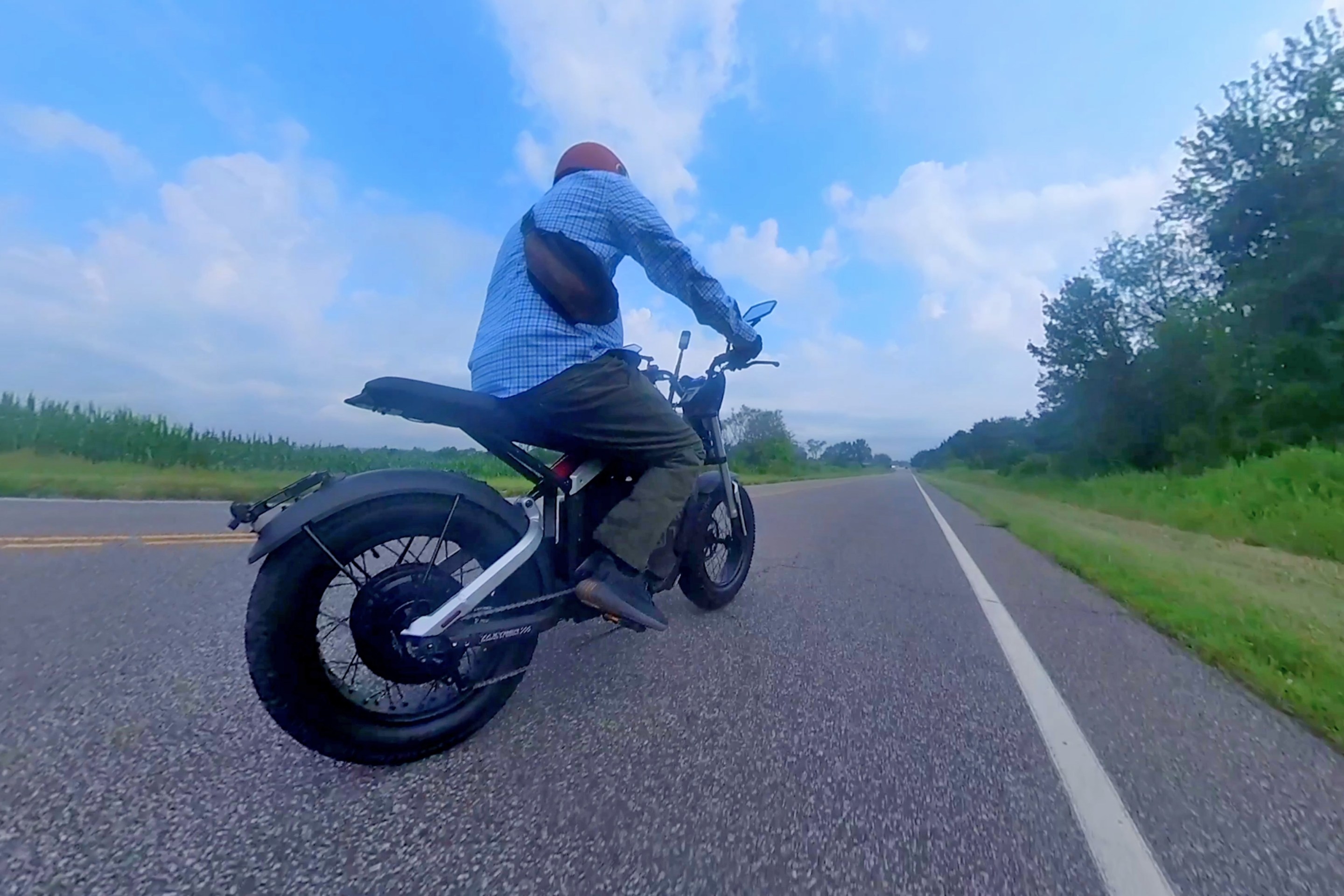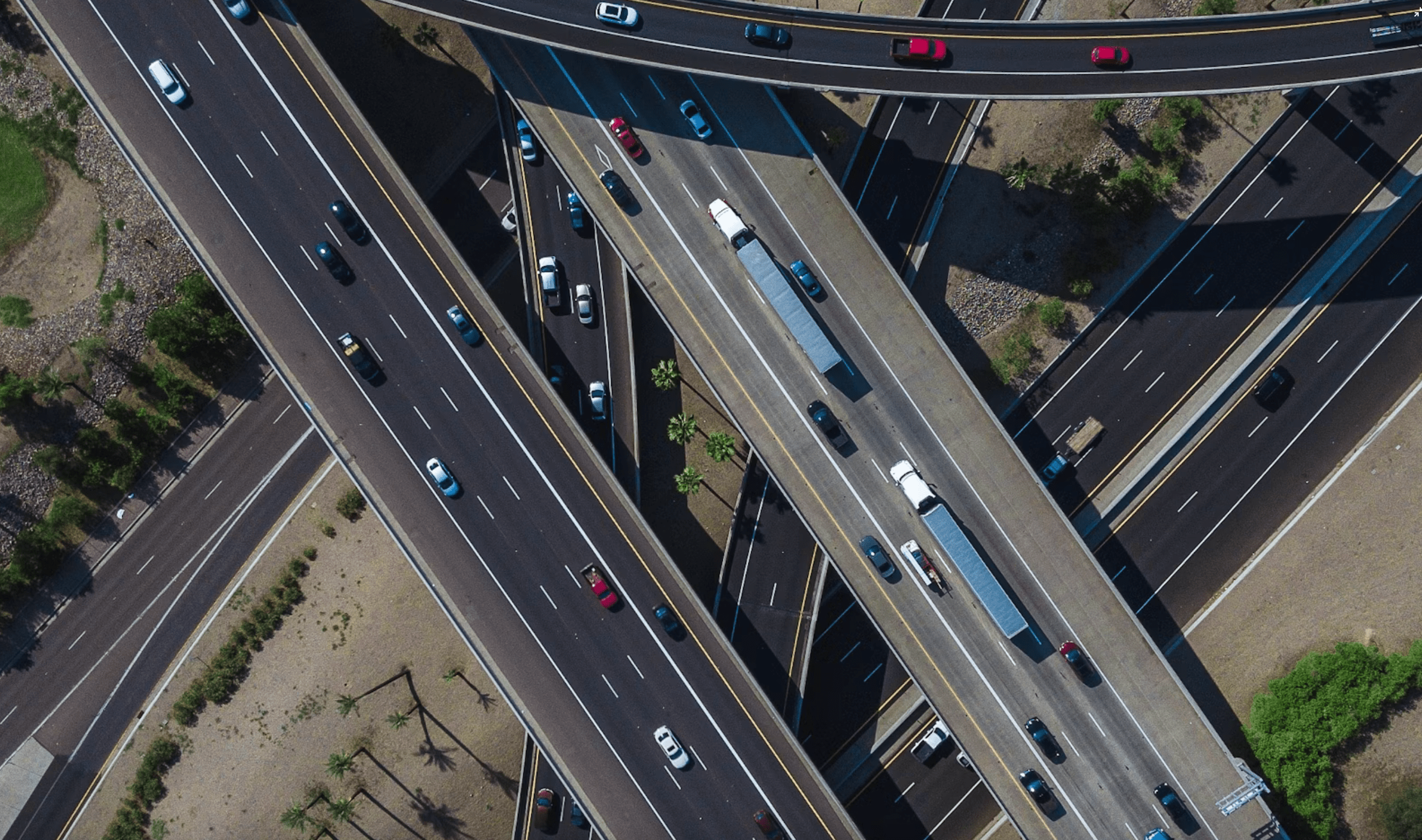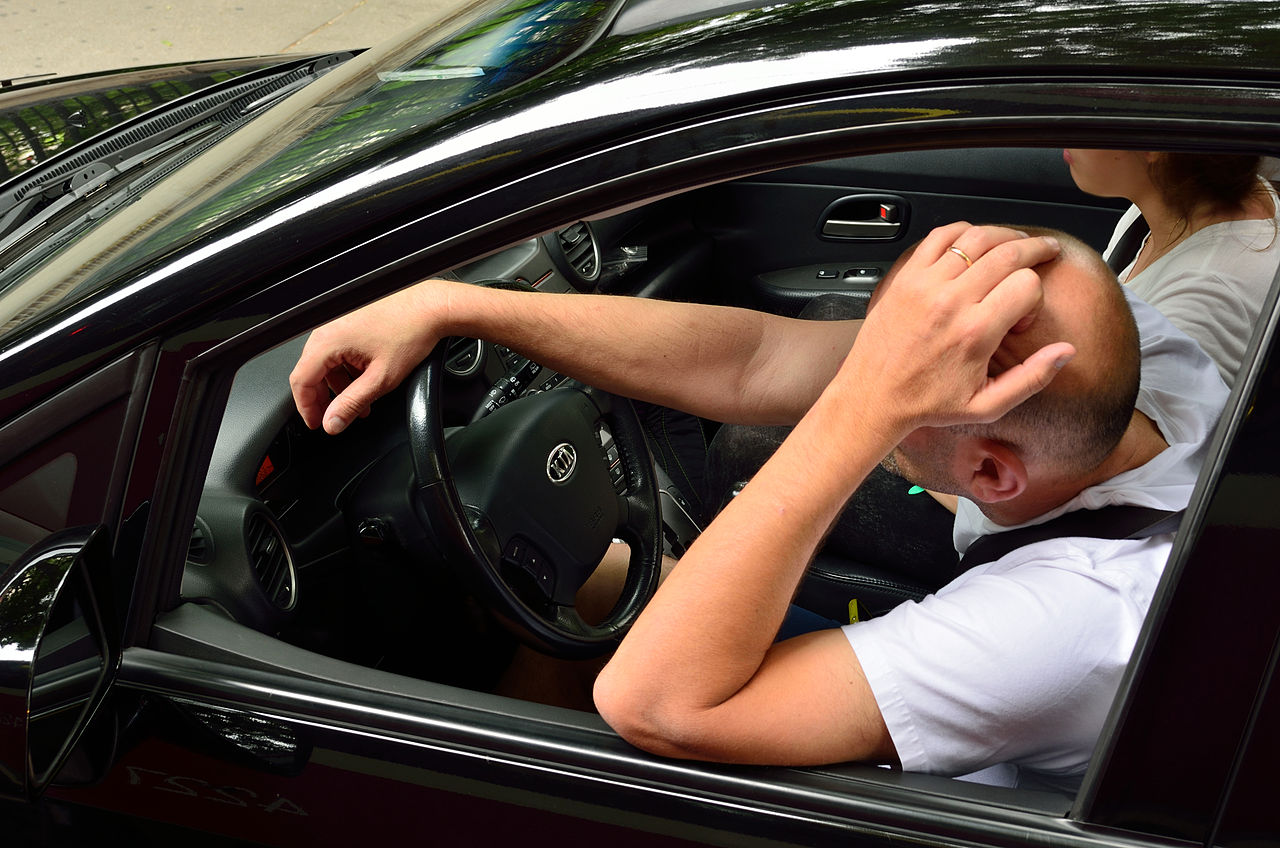On a typical weekday, bus riders make 19,000 trips on a one-mile section of Washington Street in the Roslindale neighborhood of Boston. At rush hour, they put up with bus speeds that are slower than walking.
The intense traffic congestion can drag out the approximately 1.2 mile-long trip between Roslindale Square and the Forest Hills Orange Line station as long as 45 minutes, according to Andrew McFarland of Boston’s LivableStreets Alliance. Even though buses carry 60 percent of the total number of people moving through the corridor at rush hour, transit has no dedicated street space.
Until this morning.
Bus riders got a dramatically faster ride thanks to a one-day pilot in which Boston DOT and the MBTA converted a parking lane and a bike lane into a bus lane using just orange cones. The "pop-up'' bus lane was in effect from 7 a.m. to 9 a.m. People on bikes were allowed to use the transit lane, while car drivers were not.
Transit riders noticed the difference and have been singing the praises of the bus lane on Twitter:
The experiment shows that the same low-cost approach that cities have used to quickly reallocate street space to walking and biking can also be used to try out transit improvements.
In addition to the cones, MBTA workers were stationed to keep cars out of the bus lane.
"This is an incredibly cost-effective way to move more people more efficiently along our streets without the time and resources required for capital projects," said McFarland. "We've seen a similar pilot roll-out nearby in Everett that needed only four city staff members to operate daily (two public works officials to put down cones and two parking enforcement agents to thwart cars from parking in the lane)."
Today's experiment will be followed by another on Tuesday, then a longer three- to four-week pilot planned for the spring. The spring project will include a bus lane for the p.m. peak (though not as the same time as the morning bus lane), as well as other bus priority treatments like off-board fare collection and stop consolidation, says McFarland.
McFarland says he'd like to see the bus lane made permanent.
"Today is about trying to get riders engaged," he said. "This is what we can have every day if we go to the city and ask for it."
